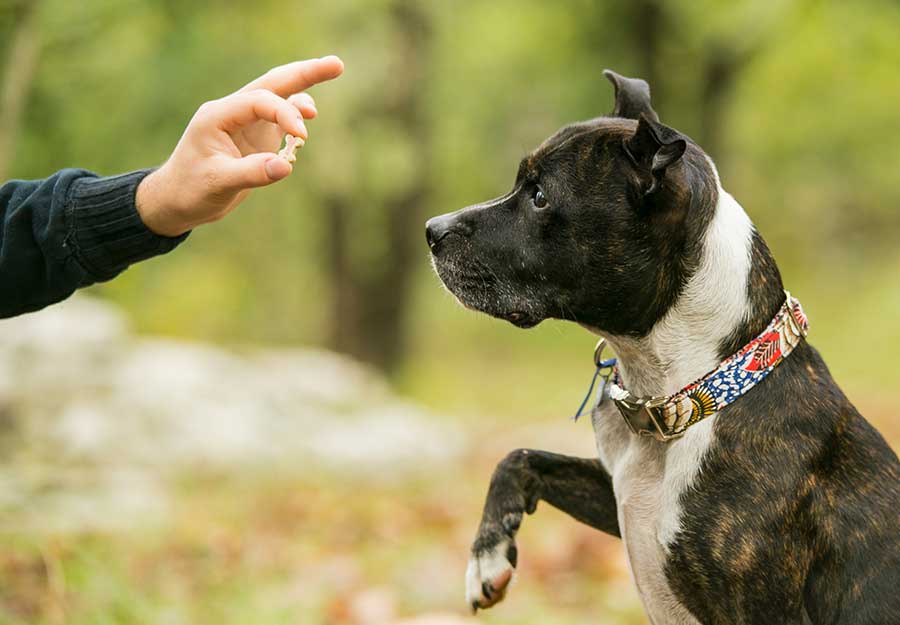Unleash Potential with Dog Training Near Me: Locate Your Local Professionals
Unleash Potential with Dog Training Near Me: Locate Your Local Professionals
Blog Article
Unlock Your Canine's Potential: Proven Canine Training Strategies for Success
Efficient canine training is a nuanced process that hinges on comprehending canine actions and employing clinically backed approaches. By integrating positive support, establishing clear commands, and prioritizing socializing, dog owners can grow a productive connection with their animals.
Recognizing Pet Habits
Recognizing canine behavior is necessary for efficient training and cultivating a favorable partnership in between dogs and their owners. A comprehensive understanding of canine body language, vocalizations, and social interactions is essential for identifying their feelings and requirements. Dogs interact mainly with non-verbal cues; for instance, a wagging tail may suggest exhilaration, while pinned ears can indicate concern or entry.

Moreover, ecological factors play a considerable role in shaping a pet's actions. Adjustments in routine, brand-new environments, or the existence of unfamiliar individuals can result in anxiety or stress and anxiety in pet dogs. Identifying these triggers enables proprietors to alleviate damaging reactions and develop suitable training methods.
Ultimately, a deep understanding of dog habits lays the foundation for successful training approaches, enhancing both habits and the total bond between the pet and its owner. dog training charlotte nc. This understanding is essential for cultivating a well-adjusted, happy canine companion
Favorable Reinforcement Techniques
Effective training counts heavily on positive reinforcement techniques, which have actually been shown to generate considerable results in forming preferred habits in pets. This method entails compensating a dog for showing details actions, thereby boosting the possibility that these behaviors will certainly be repeated. Rewards can take different forms, consisting of deals with, appreciation, toys, or playtime, depending on what inspires the specific dog.

It is important to progressively eliminate incentives as the pet finds out the actions, transitioning to recurring support. This approach preserves the behavior with time while avoiding dependency on consistent benefits. By focusing on positive support, fitness instructors can cultivate a relying on relationship with their dogs, advertising a cooperative and healthy training atmosphere that enhances total obedience and performance.
Establishing Constant Commands
A basic facet of effective dog training is the facility of regular commands. Consistency in commands is important for reliable communication in between the fitness instructor and the dog. When commands are uniform, pets learn to connect details words with wanted actions, which accelerates the training process and improves understanding.
To establish regular commands, it is crucial that all family participants use the exact same terms and gestures. For instance, if one person utilizes "rest" while another states "take a seat," it can produce confusion for the pet dog. Select clear, distinctive words for commands and guarantee everybody associated with the dog's training abides by these choices.
Reinforce commands via constant practice, making certain that the pet gets ample chances to react properly. When a pet dog effectively complies with a command, immediate favorable reinforcement needs to follow.
Lastly, be client. Establishing consistent commands takes time and effort. With dedication and clarity, you will help your dog develop a solid understanding of assumptions, ultimately leading to a mannerly buddy.
Socialization and Direct Exposure
Mingling a pet is essential for fostering a certain and well-adjusted buddy. This process entails revealing your pet to a range of environments, individuals, and various other pets to establish their social abilities and versatility. Early socializing, ideally between the ages of 3 to fourteen weeks, is crucial, as it prepares for a pet dog's future behavior.
Throughout socializing, purpose to supply positive experiences in various settings, such as parks, active streets, and homes with various other family pets. Introduce your pet dog to numerous stimuli, including noises, sights, and smells, ensuring that each encounter is gratifying. This exposure aids mitigate anxiety and anxiety, paving the way Dog training for a more resistant pet.
Participating in controlled team play sessions with various other dogs can additionally boost social skills, instructing your pet proper communications and borders. Always monitor your pet dog's convenience level during these experiences, gradually enhancing exposure as their confidence grows. Remember, the goal is to develop a well-rounded pet that prospers in diverse scenarios, promoting an unified partnership with both human beings and other pets. Prioritizing socializing will considerably add to your pet dog's general joy and habits throughout their life.
Overcoming Common Educating Difficulties

Pets may struggle to focus in hectic or unknown setups. Progressively desensitize your pet dog to disturbances by beginning training in a quiet environment and slowly introducing more stimuli as they become skilled.
Furthermore, behavior problems like leaping or extreme barking can end up being discouraging. Address these by showing different actions, such as resting comfortably when welcoming guests. Consistency and patience are important; strengthen desired behaviors consistently and avoid abuse, which can bring about complication.
Last but not least, acknowledge that each pet dog is distinct, and training timelines may vary. Dressmaker your technique to your pet dog's private needs, and seek specialist advice if needed. With determination and the best strategies, overcoming these obstacles can cause a well-trained, happy canine friend.
Final Thought
To conclude, unlocking a pet's prospective necessitates a thorough technique that integrates an understanding of canine actions, the application of favorable reinforcement strategies, and the establishment of consistent commands. Early socializing and exposure to varied atmospheres further boost a canine's flexibility and confidence. By addressing usual training challenges with customized techniques and perseverance, a cooperative and unified relationship in between canine and trainer can be fostered, inevitably resulting in a mannerly companion with the ability of growing in different scenarios.
Effective pet dog training is a nuanced process that hinges on recognizing canine behavior and utilizing scientifically backed techniques.Recognizing dog habits is essential for efficient training and cultivating a positive connection in between dogs and their owners.Efficient training counts heavily on positive support strategies, which have been shown to produce substantial results in shaping preferred actions in dogs. When commands are uniform, canines find out to link specific words with preferred actions, which accelerates the training procedure and boosts understanding.
In final thought, unlocking a canine's possible requires a detailed strategy that incorporates an understanding of canine actions, the application of favorable support methods, and the facility of constant commands.
Report this page